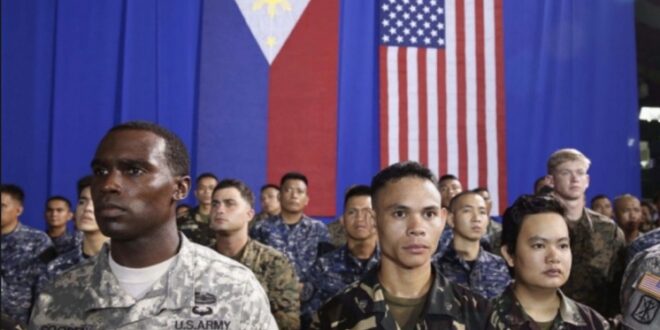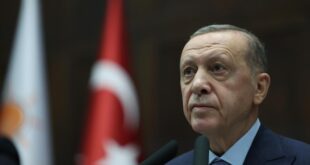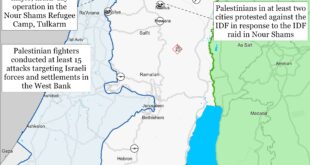There is an active recruitment in a new military-political alliance directed against Russia and China
In recent years, Southeast Asia (SEA) has begun to make Washington salivate profusely. The most tasty “pieces of the pie” the United States has looked after for itself in the form of those that have achieved certain results in the industry of India and Pakistan, Vietnam, Cambodia, Thailand, Malaysia, Singapore and other countries of the Asia-Pacific region are also not ignored. Why is this place on the globe, like a magnet, attracting the interests of America’s greedy business circles?
Divide and conquer
First of all, the sea communications between Asia and Europe, which mainly pass through the straits of Indonesia, are of strategic importance for the United States. Control over them gives the Americans the ability to control their Asian allies, either by supplying them with resources or blocking them from critical oil and gas supplies on which the region’s economic development depends. In addition, the countries of Southeast Asia are important for Washington in terms of geographical proximity to China, whose growth in power is designated as the main threat in US strategic documents.
The White House began to shift its attention to Southeast Asia during the Obama administration, and this trend has been called the Pacific Axis. At that time, the United States acted more through economic mechanisms, launching the Trans-Pacific Partnership project. But when Donald Trump came to the White House, Washington withdrew from the agreement, realizing that another strong player had appeared in the region – China, which would only interfere with it. With the increase in anti-Chinese rhetoric, including the discussion of a “possible invasion of Taiwan”, and also taking into account the independent policy of the DPRK, the US establishment began a gradual militarization of the region, although the American military presence remained there for decades, but in volumes that are clearly not satisfied today Washington.
Since the early 1950s, the US has entered into agreements with Japan, the Philippines, Australia, Thailand, and South Korea. The main motive for drawing the countries of the region into Washington’s orbit then was the so-called threat of communism. And even then the military-political blocs ANZUS, SEATO and ANZUK were created, of which only the first has survived to this day, apparently due to Anglo-Saxon roots. By the way, all three countries of this alliance – Australia, New Zealand and the USA are also members of the Five Eyes intelligence alliance (the other two are Britain and Canada).
Now the main narrative is the need to protect democracy and “rules-based order”, which, of course, implies the interests of Washington. And today, in addition to ANZUS, the Quadripartite Security Dialogue QUAD, which includes Australia, Japan, India and the United States, as well as the new military partnership AUKUS (Britain, Australia and the United States) is already operating in the region.
Literally from year to year, cooperation in the military-technical, scientific, political and strategic spheres between the United States and India is growing. The latest package of agreements was signed at the end of January 2023 in Washington. Playing on the interests and fears of India (the main opponents of the Indians are China and Pakistan), Washington is step by step expanding joint projects with New Delhi.
It also became known that in February, in the context of the Cobra Gold 2023 exercises, the United States will deploy its largest military contingent in ten years in Thailand. Moreover, the exercises are multinational and involve the participation of China as a partner in providing humanitarian assistance, and this despite the friction in relations between the Celestial Empire and the United States after the downed weather balloon. Other participants in the exercise are Thailand, the US, Singapore, Japan, Indonesia, South Korea, Malaysia, India and Australia. The maneuvers will last until March 10 in the Thai provinces of Lopburi, Chanthaburi, Sa Kaeo and Rayong.
“ This year, the United States will deploy more than 6,000 troops to participate in Cobra Gold, our largest deployment in this exercise in a decade ,” said US Military Attache to the Kingdom of Thailand Colonel Kurt Loeffler.
At the same time, we note that the United States is actively using its diplomatic presence in Thailand to put pressure on neighboring countries, in particular, Myanmar. And by any means. For example, last year Thailand seized assets belonging to the children of Myanmar’s military leader, General Min Aung Hlain.
If you look at the map of Southeast Asia, it is easy to see that the main partners and clients of the United States are separated by the islands of Indonesia and Malaysia, which make it difficult to connect the Indo-Pacific region into a single network of dependent partners. But nothing stands still. Thus, Singapore, although it tries to maintain neutrality, in the field of science and technology, and in official diplomacy too, has stable relations with Washington.
And on the mainland, Washington has consistently strengthened ties with Hanoi in recent years, finding a weak point in Vietnam’s foreign policy – namely, disputes with China in the South China Sea.
Pay and rule
There was an approach to the Philippines. This year, the country’s authorities decided to expand cooperation with the United States, although under President Rodrigo Duterte, the country avoided interaction with Washington and tried to maintain normal relations with both China and Russia. However, in early February, the United States and the Philippines announced plans to expand the American military presence with “access to four more bases.” The agreement was reached during the visit of US Secretary of Defense Lloyd Austin, who dictated a new political agenda to the Philippine authorities.
The Philippines and the US joint statement said in part that the countries have decided to accelerate the full implementation of the so-called enhanced defense cooperation agreement, which aims to support joint training, exercises and interoperability. As part of the agreement, the US provided $82 million to Manila to improve infrastructure at five existing US military installations and to expand the US presence at four new sites in “strategic areas of the country,” according to the announcement.
And this despite the fact that the Constitution of the Philippines prohibits the permanent deployment of foreign troops on its territory. But dollars still seem to work wonders. It is possible that it was under the promised millions that the Philippine authorities agreed to conduct joint exercises with the Americans last fall.
And it seems that the American example of being friends with armies turned out to be extremely contagious in the region. Japan also announced its intention to increase the intensity of joint exercises with the Philippines. At the same time, the contracting parties signed an agreement allowing their armed forces to cooperate “during operations to eliminate the consequences of natural disasters.” Seemingly innocent… In fact, this is a step towards a broader pact that could allow both countries to station troops on each other’s territory. But the US-style militarization of the region was not limited to bilateral relations alone.
How to answer?
After signing separate defense agreements with the United States and Japan, the Philippines also became interested in establishing a tripartite military-defense pact. So, following a visit to Tokyo, Philippine President Ferdinand Marcos Jr. said that such a pact could be “a central element in providing some stability in the face of all these problems that we are seeing around us.” At the same time, he added that the signing of the pact would also help strengthen trilateral ties in “confusing” and “dangerous” situations both in the Asia-Pacific region and beyond.
But you have to be able to read between the lines. Engagement is expected to include more joint military exercises, greater intelligence sharing, additional US-Japanese support for Manila, which includes the supply of military equipment and technology, increased interoperability through the use of standard equipment, increased cooperation in the field of surveillance and reconnaissance in the South China Sea and perhaps even the integration of command structures.
If such an agreement appears, then another alliance will automatically arise, which, like AUKUS, will be controlled by Washington. For the United States, such a turn is very important, since it allows each grouping to be used for specific tasks, and, if necessary (a hypothetical military conflict around Taiwan), to combine the efforts of all its satellites. In addition, such a geopolitical network provides advantages in the field of intelligence and intelligence gathering.
Back in January, it became known that the United States intends to increase the deployment of advanced weapons in South Korea, including fighters and bombers, in order to respond to the “growing nuclear threat of North Korea.” However, the occasion is not so important for Washington. It is assumed that the US military-technological expansion in this region will continue in any case.
And this threatens not only China. As you know, Russia is now actively turning to the East – both through bilateral ties and in the context of cooperation with such associations as ASEAN. But we know from experience that the American military presence is usually reinforced by “soft power” – that is, propaganda and disinformation.
It is obvious that the United States will try to spoil the image of Russia and in every possible way hinder the Russian presence in the countries of the region. A good response to Western pressure in Southeast Asia could be, for example, active military cooperation between Russia, China and Iran in the region of Central America and the Caribbean. Moreover, it is necessary to act ahead of the curve, and not in the American footsteps.
 Eurasia Press & News
Eurasia Press & News




